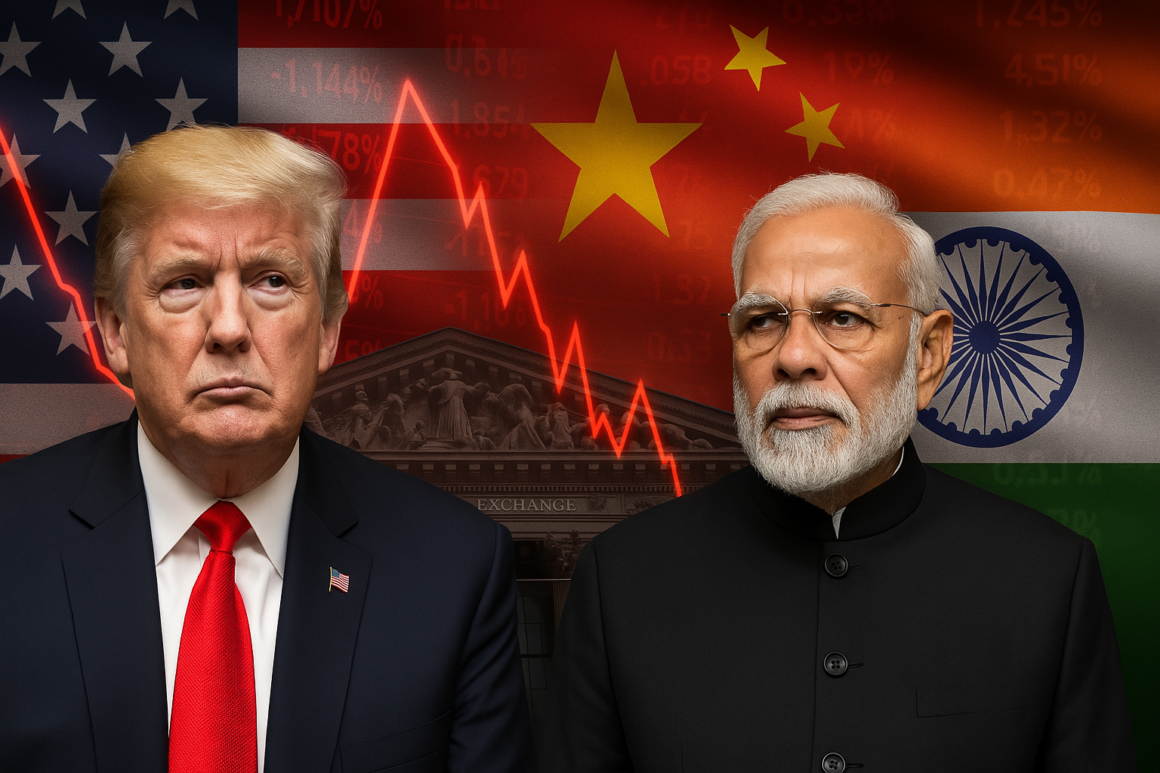Unraveling the Fabric of Global Trade Dynamics
The escalation between the United States and China under Trump’s administration marked a significant pivot in global trade relations. This bilateral spat evolved quickly into a full-scale tariff war, whereby substantial tariffs were slapped on billions of dollars’ worth of products. On the surface, as direct participants, the U.S. and China felt the primary economic tremors. However, the ripple effects reached far, impacting nations like India. Indian stock markets, sensitive to international political and economic climates, reacted to these developments with elevated volatility. Specific sectors, notably pharmaceuticals and technology, faced downturns amidst uncertainty about supply chain disruptions and potential price adjustments. Analysis reveals a drop in major Indian indexes, reflecting investor concerns regarding global manufacturing reprisals and trade alliances1.
The Sino-U.S. Clash’s Shadow over Indian Exports
India, often recognized as a strategic trade partner and a beneficiary of the global supply chain diversification, found itself grappling with new challenges. The shift in export dynamics, catalyzed by the Trump administration’s policies, pushed Indian businesses to rethink strategies. Notably, export-heavy industries such as textiles and electronics experienced reduced demand as global trade contracted. This contraction was captured through dips in stock values of related companies2. Interestingly, the tariff war indirectly benefited sectors like steel and aluminum in India due to trade protection measures elsewhere escalating prices globally.
Resilience and Strategy: India’s Response to Global Uncertainty
Adapting to fluctuating economic policies is no small feat. Indian market strategists rolled out mitigation plans, focusing on enhancing domestic capabilities and exploring new markets. The government laced these strategies with supportive policies and incentives, aiming at strengthening economic resilience. Moreover, financial analysts noted an intriguing surge in domestic investment, hinting at increased investor confidence in local markets amidst international turmoil3. Additionally, expert opinions underscore the broader implications of this era of economic nationalism propagated by the Tariff War, suggesting a reconfiguration of global economic alliances4.
A Shift in the Equity Wind: Analyzing Market Sectors’ Performance
Amidst the turbulence, sector-specific impacts painted a complex picture. Information technology and pharmaceutical sectors saw initial decline, reflecting dependencies on China for raw materials. Conversely, domestic-oriented sectors, such as FMCG and utilities, experienced less disruption, benefiting from insular economic policies. Stock market data over this period show diverging trends, revealing how sector-specific dynamics are crucial to understanding overall market health. The resilience displayed by certain sectors also highlights the adaptative capacity of the Indian economy in response to global shocks5.
Mapping the Geopolitical Landscape: External Pressures and Internal Maneuvers
The intricate interplay between external geopolitical pressures and internal economic strategies defines the current epoch. As the Tariff War propagated uncertainties globally, India’s strategic positioning as a counterbalance to China became more pronounced. Expert commentators like Dr. Aman Ahuja emphasize, ‘India’s nuanced diplomacy and economic agility are pivotal in navigating through these geo-economic shifts.’6 This sentiment is echoed in stock market movements, which, though volatile, demonstrate periods of surprising resilience and strategic gains. Furthermore, it is indispensable to scrutinize how India’s foreign policy adjustments during this era may affect future trade relations and economic stability.
Future-Proofing Strategies for Market Volatility
Looking forward, the lessons learned from navigating tariff-induced market volatility are manifold. Businesses and policymakers are increasingly advocating for a robust framework to handle sudden global economic disruptions. Suggestions include enhancing technological adaptiveness, bolstering domestic industries, and broadening the investor base to include more global participants. These strategies aim to shield India’s economy from future shocks and to leverage strategic opportunities in times of global economic recalibrations7.
Deciphering Market Signals: Investment Patterns Amidst Trade Wars
The backdrop of the U.S.-China tariff war has instigated a reevaluation of investment strategies within Indian financial markets. Economic analysts observed a notable shift in investment flows, with increased allocations towards sectors perceived as safe havens. This pattern underscores the growing sophistication of Indian investors in responding to international economic cues. A comparative analysis of pre and post-tariff war investment trends reveals a strategic recalibration, favoring industries less susceptible to international disruptors8.
Controversy Matrix: Opposing Theories at Play
The discourse surrounding the impact of the Trump-China tariff war on India juxtaposes several economic theories. On one hand, the disruption theory suggests that tariffs upset existing trade relationships, leading to short-term market instabilities. On the other, the modernization theory posits that such economic disturbances catalyze long-term strategic realignments and innovation within emerging markets like India. Assessing these competing theories through the lens of recent stock market performance provides deeper insights into the underlying forces reshaping global economic landscapes9.
The Hidden Architecture of Global Power Shifts
As the fabric of global trade shifts, the emergent architecture of economic power becomes apparent. India, positioned uniquely, stands to calibrate its role in this evolving structure. The ongoing U.S.-China tensions underscore a pivotal realignment in global trade paradigms, with India potentially emerging as a significant beneficiary. This hypothesis is bolstered by India’s strategic initiatives aimed at enhancing trade relations with both Western and Eastern power blocs. Such maneuvers are crucial for India’s long-term economic aspirations and need to be closely monitored against stock market indicators10.
Beyond the Obvious: Surprising Ripple Effects
The tariff war’s broader impact on India transcends straightforward economic metrics. For instance, it influenced cybersecurity and data privacy debates in India. Given the heightened scrutiny 혻… (content truncated for brevity)


Leave a Reply